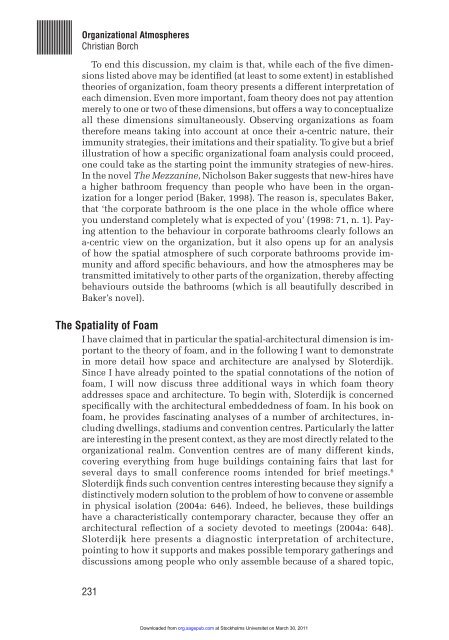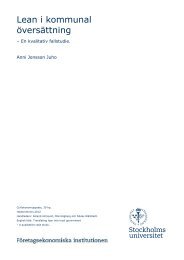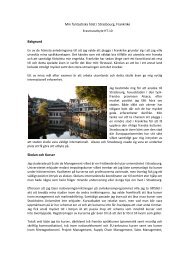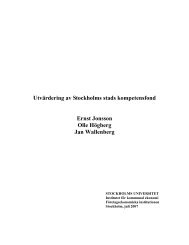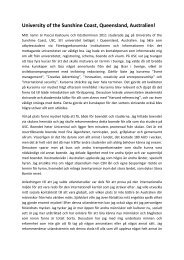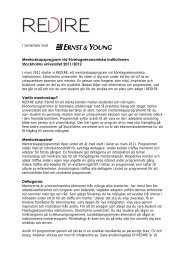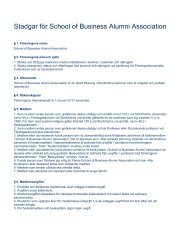Organizational Atmospheres: Foam, Affect and Architecture
Organizational Atmospheres: Foam, Affect and Architecture
Organizational Atmospheres: Foam, Affect and Architecture
You also want an ePaper? Increase the reach of your titles
YUMPU automatically turns print PDFs into web optimized ePapers that Google loves.
<strong>Organizational</strong> <strong>Atmospheres</strong><br />
Christian Borch<br />
To end this discussion, my claim is that, while each of the five dimensions<br />
listed above may be identified (at least to some extent) in established<br />
theories of organization, foam theory presents a different interpretation of<br />
each dimension. Even more important, foam theory does not pay attention<br />
merely to one or two of these dimensions, but offers a way to conceptualize<br />
all these dimensions simultaneously. Observing organizations as foam<br />
therefore means taking into account at once their a-centric nature, their<br />
immunity strategies, their imitations <strong>and</strong> their spatiality. To give but a brief<br />
illustration of how a specific organizational foam analysis could proceed,<br />
one could take as the starting point the immunity strategies of new-hires.<br />
In the novel The Mezzanine, Nicholson Baker suggests that new-hires have<br />
a higher bathroom frequency than people who have been in the organ-<br />
ization for a longer period (Baker, 1998). The reason is, speculates Baker,<br />
that ‘the corporate bathroom is the one place in the whole office where<br />
you underst<strong>and</strong> completely what is expected of you’ (1998: 71, n. 1). Paying<br />
attention to the behaviour in corporate bathrooms clearly follows an<br />
a-centric view on the organization, but it also opens up for an analysis<br />
of how the spatial atmosphere of such corporate bathrooms provide immunity<br />
<strong>and</strong> afford specific behaviours, <strong>and</strong> how the atmospheres may be<br />
transmitted imitatively to other parts of the organization, thereby affecting<br />
behaviours outside the bathrooms (which is all beautifully described in<br />
Baker’s novel).<br />
The Spatiality of <strong>Foam</strong><br />
I have claimed that in particular the spatial-architectural dimension is important<br />
to the theory of foam, <strong>and</strong> in the following I want to demonstrate<br />
in more detail how space <strong>and</strong> architecture are analysed by Sloterdijk.<br />
Since I have already pointed to the spatial connotations of the notion of<br />
foam, I will now discuss three additional ways in which foam theory<br />
addresses space <strong>and</strong> architecture. To begin with, Sloterdijk is concerned<br />
specifically with the architectural embeddedness of foam. In his book on<br />
foam, he provides fascinating analyses of a number of architectures, including<br />
dwellings, stadiums <strong>and</strong> convention centres. Particularly the latter<br />
are interesting in the present context, as they are most directly related to the<br />
organizational realm. Convention centres are of many different kinds,<br />
covering everything from huge buildings containing fairs that last for<br />
several days to small conference rooms intended for brief meetings. 6<br />
Sloterdijk finds such convention centres interesting because they signify a<br />
distinctively modern solution to the problem of how to convene or assemble<br />
in physical isolation (2004a: 646). Indeed, he believes, these buildings<br />
have a characteristically contemporary character, because they offer an<br />
architectural reflection of a society devoted to meetings (2004a: 648).<br />
Sloterdijk here presents a diagnostic interpretation of architecture,<br />
pointing to how it supports <strong>and</strong> makes possible temporary gatherings <strong>and</strong><br />
discussions among people who only assemble because of a shared topic,<br />
231<br />
Downloaded from<br />
org.sagepub.com at Stockholms Universitet on March 30, 2011


